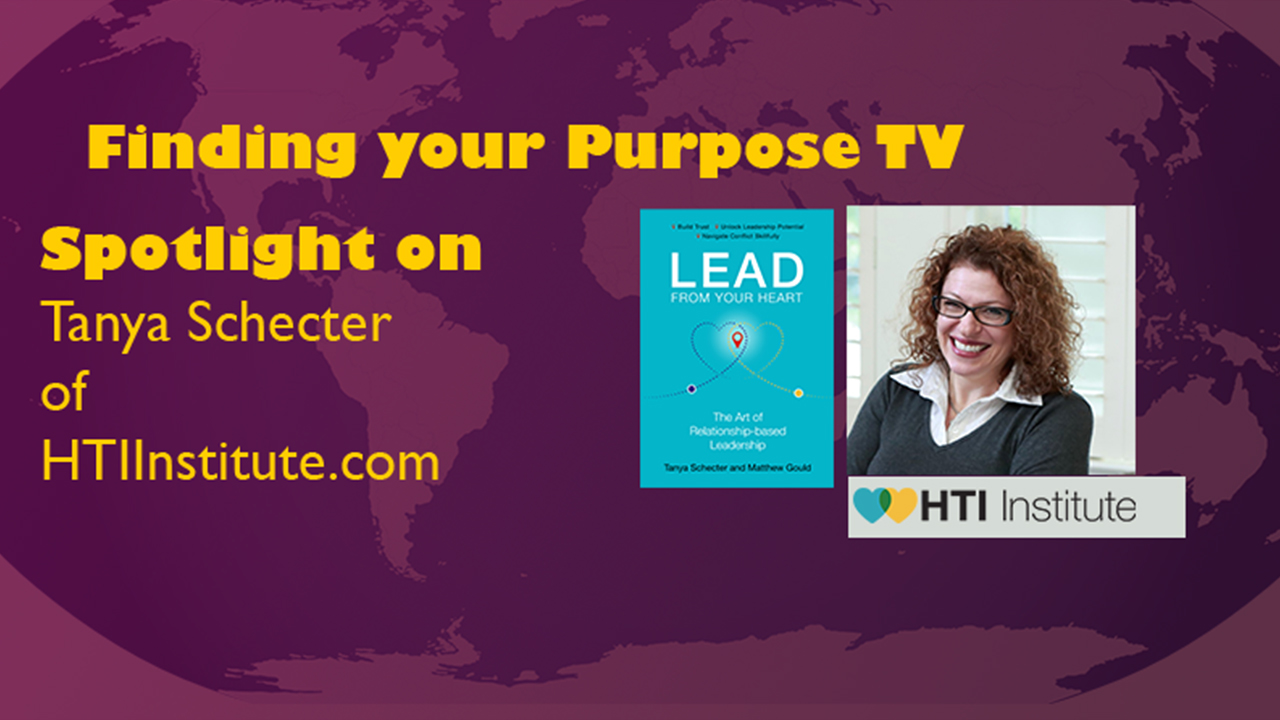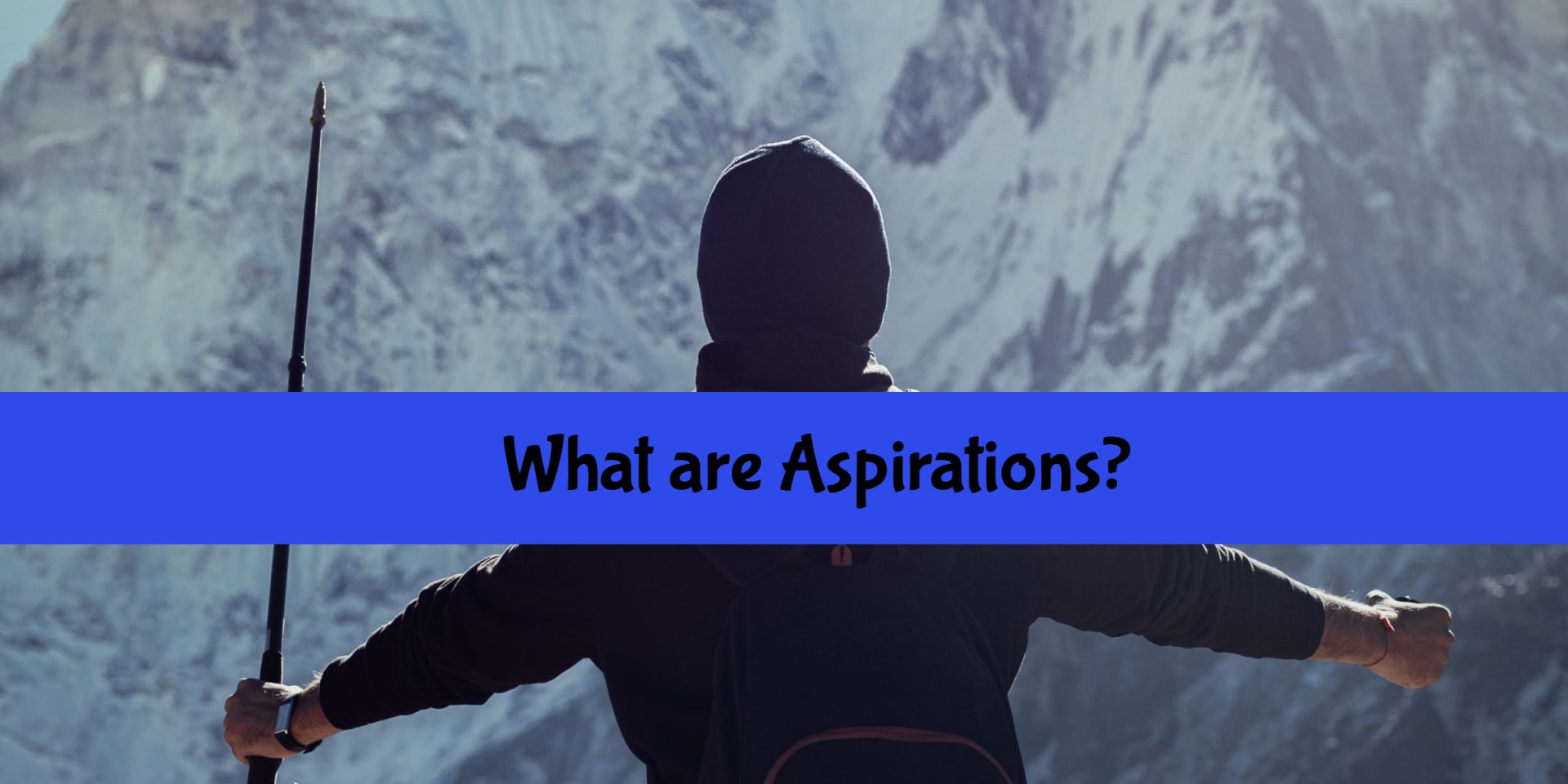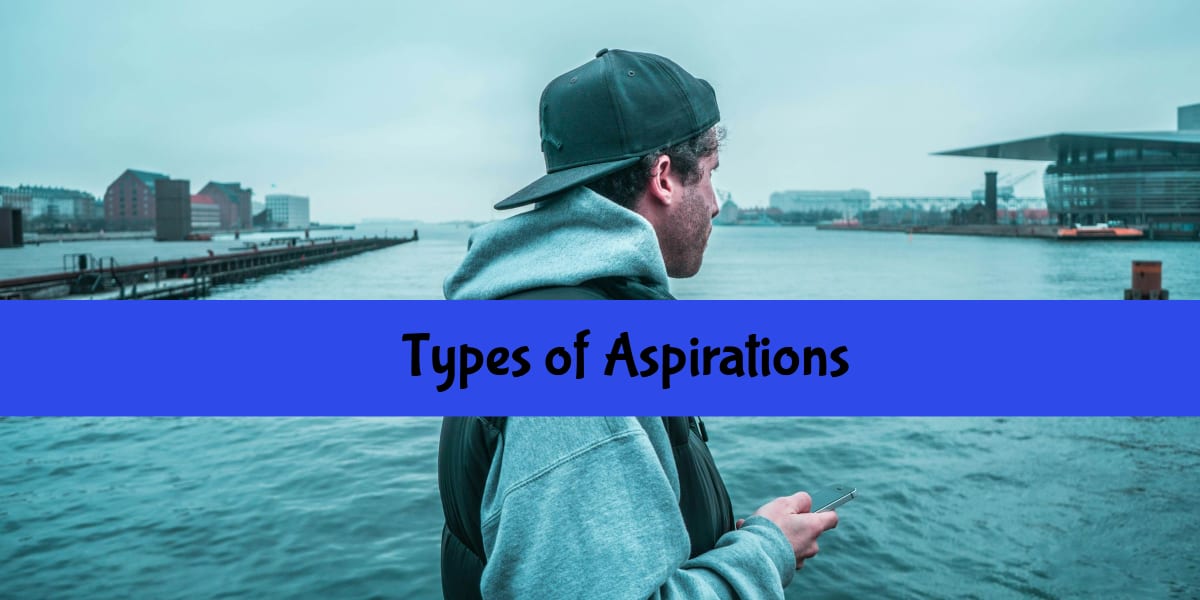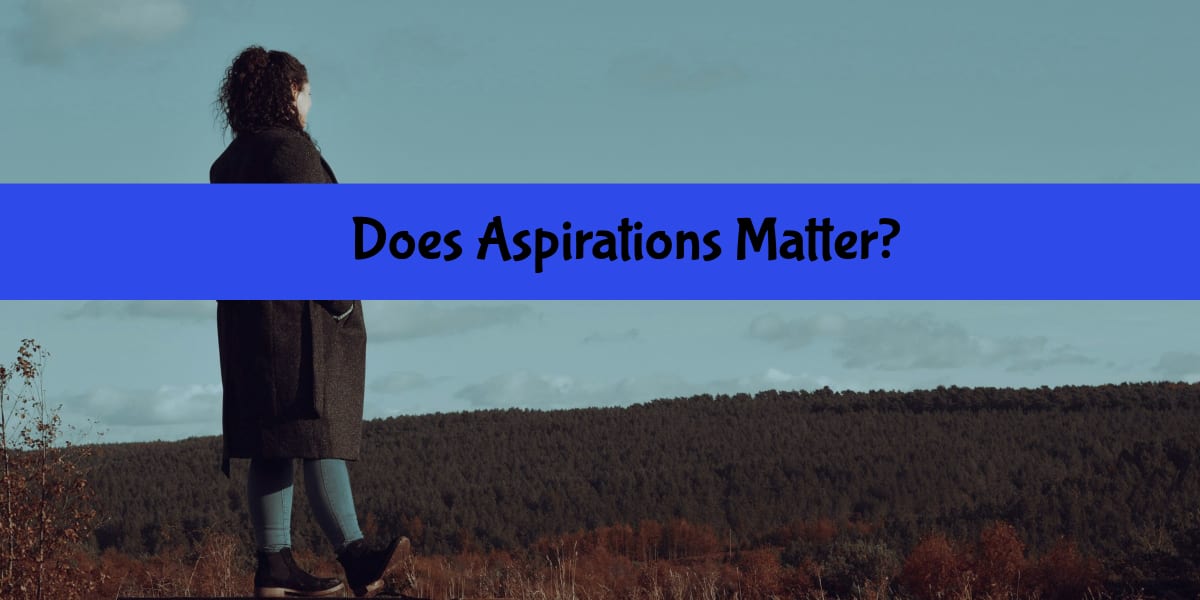Welcome everybody. This is Jane Gardner at Finding Your purpose. And today we’re going to be spotlighting on purpose driven entrepreneur. And today on today’s show, we’re going to be spotlighting Tanya Schechter. I think that’s going to be my, it’s going to be my, what do you call it thing The lady who doesn’t know how to pronounce people’s names, talking to us here, about relationship-based leadership. And first off, Tanya, before we talk about your business, I’d love to find out how you actually got into that business, because that can really be interesting to find out what your, how you realized your purpose and how you got into your business. And that would be great if you could speak.
Tanya
Thanks, Jane. And I’m so, yeah, I’m so glad to be here. it’s a really interesting question. I had a background as a training and performance consultant for over 20 years, and I’ve worked in tons and tons of big organizations and small organizations, public sector, private sector, doing consulting coaching.
And I started noticing how there was often a lot of conflict and a lot of misery around employees and that, that was resulting in a lot of underperformance. And so what I really started looking at was how leadership made the difference, and they really good leaders could take a situation that was really negative, where there was a lot of toxicity and they could turn it around and rally a team together to get results. Whereas leaders that were ineffective would do the opposite. They would just exacerbate the tensions and the conflicts and the, and the disease that was going on.
Jane
Awesome. You know, I don’t know where you are working, but in my previous life, I was a drafter working in an engineering company. And in fact, I’m married an engineer, so they were, they are not very disciplined, very fun. And let’s just say they’re fairly dysfunctional companies. And so I certainly know what you’re talking about. So, what, what did, did you find that you found to be the solution for, these issues that happen now What, with, all the sexual harassment that’s happened in the last few years and everything yet, you must, there must be a lot of demand for leadership training,
Tanya
And so what we found is that it’s really all about relationships starting with the relationship that we have with ourselves, and then the relationship
That we have with others, and then looking at our relationships impact on the greater world. And when we, as leaders can stay in integrity and stay in relationship, it becomes a lot easier to navigate conflicts and navigate, challenges so that we come out on the other side, using the conflict as a way to actually strengthen our own relationships and our teams and the outcomes. So it becomes an opportunity versus a hurdle.
Jane
Oh, so do, do you find that they like being told, I mean, they must be aware that there’s conflict, but I mean, most people don’t want to talk about conflict. So what do you, how do you work through that process in terms of, identifying, well, they may identify it, but
Tanya
There’s a bunch of different things. The first thing is whether you want to talk about conflict or you don’t want to talk about conflict conflicts happening, right And so the conflict is either addressed or not addressed. And people either, you know, we’ll try and smooth it over or tuck it under the rug, but the conflict is still there. It’s not being resolved. So one of the first things that we do is we start working with people to identify their own innate responses to conflict. ‘Cause everybody has a go to place. Some people are runners, some people are avoiders, some people are like, okay, bring it on. Right. Let’s talk about it. Right. And, but that often can turn into more of a fight or a confrontation versus a true communication collaboration to find a new solution. So first we get people to start thinking about what their default responses are and the impact of those default responses. And then we start getting them to work on where they might see the opportunity and starting to kind of what we talk about it is moving the needle and that there’s a range of different responses. And then we start giving them tools and techniques to choose a different response.
Jane
Oh, no. That’s that sounds about that sounds. That sounds good for sure. can you, can you tell us a little bit about, the HTI Institute and, and how that, wraps all together into your, your business, ideas and principles and things
Tanya
Sure.
So HTI stands for hearts together inspire, and that’s what we truly believe is that when two people are connected and in alignment and alignment, doesn’t have to be totally agreement that there’s more possibility for moving forward. And so we developed a relationship map that we use to help guide people on how to start working with conflict and how to start managing obstacles that they come up with so that they can stay in relationship and then move forward, stronger together. the map really came out because my, my coauthor, Matthew Gould and myself were very different in dealing with. And we started noticing that if we were each sticking to our default patterns, we weren’t going to get anywhere. And so we needed to find a new way if we were going to work together.
Jane
Oh, wow. So, yeah. So let’s talk about your book, from the heart. Yeah. Leadership, no leader from the lead, from your heart, the art of relationship based leadership. Yeah. How did that happen Was that before or after you started working this process.
Tanya
It was after what we started realizing is that this map that we have, it’s a tool and yet it actually was, there was enough material in there to talk about that. We, we really felt that we needed to write a book and a book that would have illustrations in terms of stories that we included of ourselves, both personal and work things that we came across in our work lives that we had had as true life experiences, where we saw that there were rapid changes either from conflict that had been managed well or not managed well, and the impacts of it. And even when we didn’t manage conflict conflict well, and then, what we truly believe is that, you know, people have, they need to understand things conceptually, but understanding something, conceptually isn’t enough to change. What’s in your toolbox. It’s just creating an awareness that there’s something else there.
And what people really need is to start then having the, the opportunities to practice and break down the concepts into manageable tools that they can apply. So after we explain the concepts and use stories to illustrate the different ways that they can, the concepts can look like we also create almost like a workbook at the end of every chapter. There’s a set of exercises that people can go and do and work with their families at home. They can work them at work and really start to see what changes. And is it positive, negative Is this something that they want to keep doing or not.
Jane
Yeah. I thought I’d show the photo of the book. And you could mention, that you’ve and mentioning that actually it’s also good for personal relationships as well as business. How would you, you just mentioned that you would use some of the exercises in there then.
Tany
Oh, you can use almost every exercise in there for work and for personal. Yeah. And part of it is starting to get in right. Relationship with self. Right. Cause we believe that every, every leadership action starts with being in right relationship, starting with being in proper relationship with yourself. And when we’re in right relationship with ourself ourselves, we’re often clear on what our values are. We’re acting in an, in alignment with our values and using our values as a source to really, drive our decision making.
Jane
Yeah. Yeah. I totally agree. I feel that if yeah, you have to be self otherwise you won’t get anywhere. Well, you can just wander through your life. Yeah. So yeah, I found that I’m becoming a bit more aware of myself, helped me with my relationship with my husband for sure. And so I certainly appreciate that kind of awareness.
What for you made a big difference
it’s just, being, just finding out that yes, it was okay to be me who I am because, you know, being as someone who’s fairly quiet and shy and withdrawn you, as you can imagine, it’s, it’s difficult for me to do public speaking and stuff like that. So, so this is sort of my armor. Right. You know And, and, yeah, and realizing, well my husband and I worked together, he’s an engineer and I do the administration and just realizing that, you know, he’s, he’s an engineer and I’m the administrator and, you know, he’s, it’s his business and, not to interfere cause I tend to like to help people out and, it can get me into trouble. So it’s great. I’m going to have to get your book for sure. Yeah. I’d love to be back once. You’ve read it. Yeah. That’s, that’s a great book. Yeah. So I was wondering how you could tell us how you were mentioning that you can, you see conflict as an opportunity. So wonder if you could speak a bit about that a little,
Tanya
Well, conflict is everywhere, right And often in society it becomes like ignore the conflict or you have to polarize it’s my way or your way. And what we see is that when there’s a problem, leadership means looking at the problem together. It’s not about blaming, right. It’s first of all, taking ownership of whatever’s going on and then using it as an opportunity to move forward. And so if there’s a conflict, instead of just exploring the two perspectives, the first thing to be would be, well, let me explain my perspective or let you explain your perspective so that each of us can truly understand the other perspective. And yet let’s go beyond that. We’ve got an issue, we’ve got something going on. What’s our objective, where do we want to go And what other perspectives could we adopt And what other options can we look at to start finding a solution that’s more in alignment with what our bigger vision is other than being right.
Jane
Oh, Oh, I see. Yeah, that, that would certainly that could, you know, even change the direction of a company. I would think couldn’t it because if you listen to everybody, instead of just the leader that that would really, I think help totally. They have lots of ideas. I’m sure the people who work there as well as the leader. Oh, that’s, that’s great. Now the hard one is how to lead from your heart. how do you feel that, how, what, what does that mean to you How to lead from your heart,
Tanya
Really leading from the heart is staying in alignment with your values and respecting other people’s values, looking for commonality and really, putting the relationship first. I mean, if we’re out of alignment and out of integrity with ourselves, we can’t be effective leaders. And it’s the same thing. If we’re in relationship and we’re having a negative impact on somebody else, we can’t be effective leaders. If we’re damaging the relationship itself, we can’t be effective leaders. And even if we’re fine in our, in our relationship, if we’re negatively having an impact on the outer world, again, we’re not effective leaders. And so it’s really about the relationship, keeping the relationship front and center and thinking about how important it is and where we want to hold that relationship’s important. Right. Is it more important than the bottom line or is the bottom line more important Which, which is it and if the relationship is more important, most of the time, the bottom line will,
Right. Oh, awesome. That’s a great takeaway. I think if I was to say that a relationship is more important than, you know, the bottom line and it will actually help the bottom line. That’s a great, great way to think of working.
Tanya
One of the examples that we use in our book is about Starbucks. And I think it’s, it’s such a great example of it, you know, in 2008, when, you know, when everything was tanking from the financial crisis and Starbucks stock was down to seven bucks and you know, how Harold Schultz had been booted out and everybody’s like, Oh yeah, Starbucks is going to tank, that’s it for them, you know And then they called him back and he realized, you know, there’s no way, like we don’t have enough money. The stores aren’t doing well, we’re not in line with our values. We’re not creating that sense of community that we set out to do. Our employees aren’t being treated well. And so he hired a bunch of consultants and they said, well, you know, obviously the way out is just to remove health benefits. And he just looked at them and said, get out. Right.
And he
Sure to give everybody the, the keep and keep benefits thread, the whole financial crisis, everybody and their extended families, even part time workers got benefits. He made sure to like reestablish the quality of the coffee, cause it had really gone down. So he would do things like shut down, stores to retrain everybody on how to make a proper cup of coffee stopped, you know, letting the coffee sit around and really change the environment so that it could create a community that he wanted. Right. That was the real in inline with the values of Starbucks. And we’ve seen that again and again, the years, you know, when there’s been a race relations problem, they’ve shut down the stores, which costs them millions and millions of dollars to do, just to train everybody. Right. They’ll pay for their, their employees, to go back to school.
Retrain. So,
In my mind, all of that, it’s like looking at what’s the relationship, both with the employees, what’s the impact on the outer world, what’s the impact with the customers. Right. And what goes on within the stores, it’s all really, really important. And by holding that they’re extremely, extremely proud.
Jane
Right Yeah. Yeah. And I actually, I just, and we could almost just continue on and what, with the pandemic, I mean, I think Starbucks is also is a, is a fore runner of doing radical things. I believe what, well, what do you feel about the pandemic I think it’s a good time for leadership to be, you know, to be changed.
Tanya
The pandemic, you know, at first people were talking about it being a pause and I just kept saying, no, it’s not a pause. It’s a reset. And in a way it’s almost crystallized everything. That’s not working. Right. Like all these like divisions have been exacerbated. If we look at the politics and we look at the economy and where people are sitting and it’s becoming no longer tolerable for almost anyone. And so now there’s almost like a crack in a shift and it’s like, what is the importance. Is it the environment. Is it having humans having more equality and everybody having a baseline level of economic success. You know, what is the most important. And I think these things are all in question right now and it’s becoming clear that relationships and people matter.
Jane
Awesome. Well, that’s, that’s awesome. Tanya, I’m just, I’m just blown away. And I wanted to show that your book again, as well as your information for everybody, because I’m going to be buying your book for sure. Is it, is it this year
It came out in 2020.
It did. It came out in May and it’s available on Amazon. We recently released the audio book on audible and then there’s, there’s eBooks available like on Kindle and through the bookstore.
Jane
Yeah. Yeah. I see Barnes and noble has it as well and yeah, that’s, that’s great. Yeah. And under $20, so yeah, that’s important these days. Totally. Well, thank you, Tanya. thank you for this. talking about, your, your business, and leadership, because I think it’s really important in these times and I wanted to thank you for taking the time today, to come in and talk about, being driven and your business. Yeah.
Tanya
That’s been a great, great conversation. So nice to talk about. Well, I love talking about leadership, so yeah. Okay.
Thanks a lot, Tanya,
For more on relationship based leadership, go to Amazon and search for Lead from your heart.




